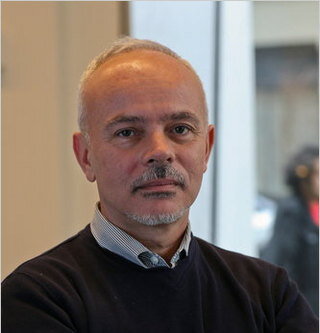Ecological Urban Design
Brian McGrath, an Associate Director of the Tishman Center and Professor of Urban Design at Parsons, recently co-authored a book titled Patch Atlas, which is a new tool for mapping urban land cover that integrates design principles and ecological knowledge for understanding cities as complex, patchy, and dynamic systems. McGrath also co-authored an article in Science for the Sustainable City which presents key findings and insights from over two decades of research, education, and community engagement in the acclaimed Baltimore Ecosystem Study.
We asked Brian a few questions about his recently published work.
How does the Patch Atlas tool challenge the current approach to urban planning and urban design?
Current methods of national land-use planning and policy are based on coarse-grain land use rather than land cover separating, for instance, urban from rural and manufacturing from residential. The Patch Atlas is based on a high ecological resolution classification of the land cover of the Gwynns Falls watershed. The watershed bounds farms and natural preserves of outer Baltimore County to row house blocks of West Baltimore as one urban social ecological system. The Patch Atlas is a tool that can identify both natural ecosystem processes and social patterns of environmental injustice.
What kind of work is the Baltimore Ecosystem Study engaged in and what is your role within the organization?
Since 1998, the Baltimore Ecosystem Study has been investigating the ecological, cultural, and economic forces that shape the Baltimore metropolitan area. I am the founder of the urban design working group; which through academic design studios and collaborative research projects endeavors to connect the science of the study to neighborhoods and communities of the Baltimore region.
How did your co-authored chapter on Ecological Urban Design contribute to the overall theme of the publication, Science for Sustainable Cities?
The book Science for the Sustainable City demonstrates how ecological scientific discovery can be actionable when communities have knowledge about their neighborhood within larger urban systems. My chapter connects the history of racial segregation and environmental injustice in the city region as discrimination by design and suggests new collaborative methods and tools to reverse this toxic legacy.
What are some of the common themes between Patch Atlas and the Ecological Urban Design chapter?
The Patch Atlas is a tool developed between two plant ecologists, an architect and a landscape architect to operationalize and make actionable the theoretical framework of the Baltimore Ecosystem Study. It is like a jigsaw puzzle that allows readers to understand the colossal structure of a complex urban system piece by piece.
Interview by Anastasia Standrik


